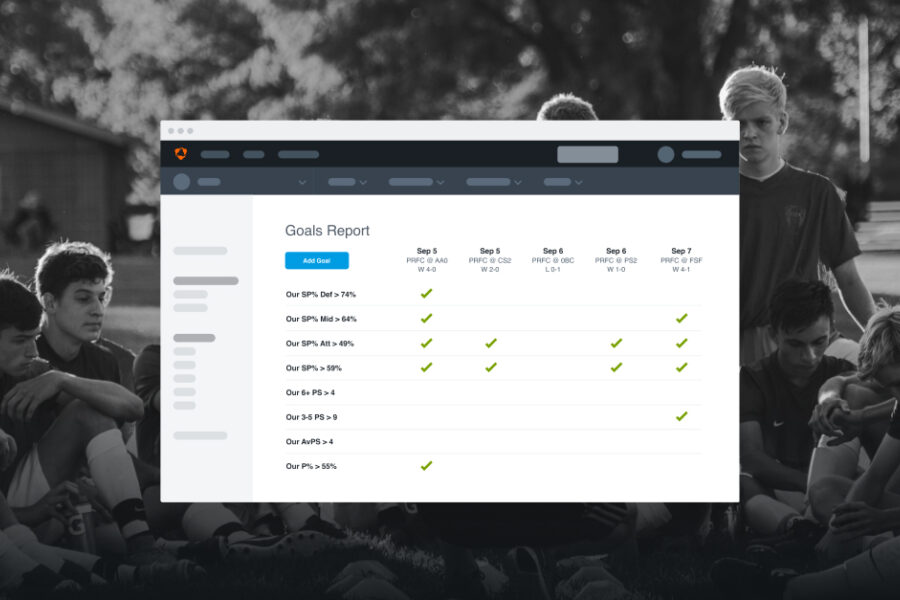A look at a unique teaching technique to better involve athletes in the learning process.
How Does a Flipped Classroom Work for Your Soccer Team?
There are two important features of a flipped classroom, or a flipped soccer field as I call it. First, the coach shifts control of the performance outcomes to the players, who will have more accountability and be more involved in the decision-making process.
Start with a simple introductory exercise that encourages players to review film after each game and use Hudl to create a highlight video. The focus can be individual or team, tactical or technical. By doing this, players become far more active in contributing and often transition naturally into the role of the teacher. For example, during a field session training the attacking team to build up play from the back, the coach can call on players to share their tactical solutions. Players can work in small groups in Hudl prior to the field session to create videos and diagrams to extract successful approaches from prior games.
Why Flip?
Most soccer coaches have the desire to improve the performances of their players. In general, coaches are highly motivated educators who will go above and beyond to provide athletes with experiences that accelerate learning. Our capacity to develop players and teams is only curtailed by limitations of time and availability. If we are to achieve our bigger player development goals, we need to think creatively and be willing to modify our teaching approach. One innovative method is to “flip the classroom.”
Hudl Helps Power a Flipped Classroom
Hudl is a great tool to facilitate a flipped-classroom approach because the learning environment is already set up for players to expand their knowledge, diagnose the essential details of their performance and observe the implementation of the coach’s tactical principles. Hudl provides the tools and content—the coach simply has to empower his or her athletes.
Start Flipping the Classroom with Hudl
- Prepare our mindset: We must understand the limitations involved with trying to impact all players, given that many coaches have multiple teams and/or several jobs. We need to trust in the ability and commitment of our players to take some responsibility for their own individual and team goals.
- Share expectations: It’s also important to share the level of commitment you expect from players and parents. Players must contribute and be engaged during training sessions. Encourage them to ask questions and be self-advocates for their work. Allow players to collectively decide their roles in providing feedback and public speaking (don’t force all players to perform in the same way). Depending on the age of players, parent participation will be also invaluable.
- Individual tasks first: An ideal time to introduce Hudl to players is in 7v7 and 9v9 formats. This is a critical time to help them in their decision-making, both on and off the ball during games. Lessons on when to pass, dribble or shoot; angles of attacking support; and defensive recovery runs will all be better supported with video. Start with a simple task, such as creating a highlight video for a player’s top five attacking and defending plays.
- Establish reasonable time expectations: 15-30 minutes per week at first will be a good way to get started.
- Mentorship of the coach: In a flipped classroom approach, the coach needs to transition from a lead role to a more supportive, mentorship role. It’s critical that the coach is engaged in regular oversight and follow-up, and is on hand to offer support for slow starters.
How to Get Started
Here are a few suggestions on getting your players started with a player-driven approach to analysis. The complexity and focus will depend on the age of players, familiarity with Hudl and your tactical priorities.
- Individually create a 90–120 second highlight video of your five best attacking and defending moments in the game.
- Individually identify three goals for the next five games of the season and create a Hudl playlist for each. Following each game, add clips to the playlist and share with the coach. Examples of a playlist include:
- Getting into a goal side position quickly when I lose the ball.
- Use my left foot to open more passing options to the left.
- Take more shooting opportunities from outside the penalty box.
- In pairs, create a highlight video of the last game that demonstrates three different ways we built up play from the goalkeeper to the forwards.
- In groups of four, design three attacking free kick routines from the edge of the penalty box. Record the routines, use the drawing tools in Hudl and share with your teammates.
In pairs, prepare a Hudl scouting report for an upcoming opponent and identify three attacking tendencies, then suggest how we may defend against them. Note: This is a great project for high school players. The coach can assign different tasks to pairs or small groups each week on a rotation schedule.
There are many benefits of a flipped classroom approach. With Hudl, implementing changes to a traditional teacher-controlled environment are relatively simple. The coach guides players to become students of the game and active participants in the learning process. You can expect players who become the teacher will have a fuller understanding of the game, gain more buy-in and better support the coach’s direction—in other words, all-around more confident participants.
















